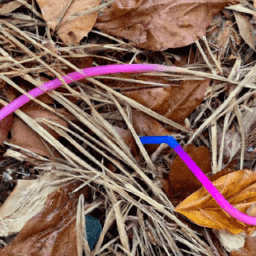When Was Biodegradable Plastic Invented?
Learn about the fascinating history of biodegradable plastic, from its early origins to advancements. Discover the pioneers behind this eco-friendly invention.
Have you ever wondered when biodegradable plastic was invented? In this article, we will explore the fascinating history of biodegradable plastic and discover the timeline of its invention. From its early origins to the advancements and innovations that have made it an eco-friendlier alternative, we will delve into the world of biodegradable plastics and uncover the pioneers behind this remarkable invention. So, let’s embark on this journey and learn about the evolution of biodegradable plastics.
General Background
What is biodegradable plastic?
Biodegradable plastic refers to a type of plastic that has the ability to break down and decompose naturally through the action of microorganisms such as bacteria, fungi, or algae. Unlike traditional plastics that can persist in the environment for hundreds of years, biodegradable plastics offer a more sustainable alternative by reducing the environmental impact associated with plastic waste.
Importance of biodegradable plastics
The importance of biodegradable plastics lies in their potential to address the global plastic pollution crisis. As traditional plastics continue to accumulate in landfills and oceans, causing harm to ecosystems and wildlife, the development and adoption of biodegradable plastics offer a ray of hope. Biodegradable plastics can help minimize the impact of plastic waste by breaking down into harmless natural components, ultimately reducing pollution and aiding in the transition towards a more circular economy.
Types of biodegradable plastics
There are various types of biodegradable plastics available in the market today, each with its own unique characteristics and applications. Some common types include starch-based biodegradable plastics, polylactic acid (PLA), polyhydroxyalkanoates (PHA), and polybutylene adipate terephthalate (PBAT). These plastics can be derived from renewable resources, synthesized through microbial fermentation, or blended with traditional plastics to enhance biodegradability.
Early Developments in Biodegradable Plastics
Early experiments with biodegradable materials
The exploration of biodegradable materials as an alternative to traditional plastics dates back to the early 20th century. Scientists and researchers began experimenting with naturally occurring substances such as cellulose, rubber, and protein-based polymers. These early experiments aimed to develop materials that could mimic the properties of traditional plastics while being biodegradable.
Use of starch-based biodegradable plastics
Starch-based biodegradable plastics gained attention in the 1970s as a potential solution to the plastic waste problem. These plastics are primarily made from starch derived from corn, potatoes, or other renewable sources. Starch-based biodegradable plastics exhibit good mechanical properties and can break down into harmless natural components when exposed to specific environmental conditions, such as high temperatures and moisture. However, their limited shelf life and sensitivity to water have posed challenges for their widespread adoption.
Emergence of polylactic acid (PLA)
One of the major breakthroughs in biodegradable plastics came with the emergence of polylactic acid (PLA) in the 1990s. PLA is a biodegradable and compostable polymer derived from renewable resources such as corn starch or sugarcane. It offers excellent transparency, durability, and processability, making it suitable for a wide range of applications, including packaging, textiles, and consumer goods. The introduction of PLA opened up new possibilities for biodegradable plastics and paved the way for further advancements in the field.
Key Milestones in Biodegradable Plastic Invention
Introduction of PHA biodegradable plastics
Polyhydroxyalkanoates (PHA) biodegradable plastics gained prominence in the 1980s and 1990s. PHA is a type of polyester produced by microorganisms through the fermentation of renewable feedstocks. It possesses similar properties to traditional plastics but is biodegradable under natural conditions. PHA has been utilized in various applications, from food packaging to medical devices, showcasing its versatility and potential to reduce landfill waste.
Development of PBAT biodegradable plastics
Polybutylene adipate terephthalate (PBAT) is another significant milestone in the invention of biodegradable plastics. PBAT is a polyester that combines petroleum-based adipic acid and terephthalic acid, along with biodegradable butanediol. This combination results in a flexible, durable, and biodegradable material. PBAT has gained attention in the packaging industry due to its compatibility with existing machinery and ability to enhance the biodegradability of conventional plastics.
Advancements in compostable biodegradable plastics
Recent years have witnessed significant developments in compostable biodegradable plastics. Compostable plastics are designed to break down in industrial composting facilities, resulting in nutrient-rich compost. These plastics, often made from a blend of renewable resources and traditional polymers, offer an alternative to single-use items like cutlery, cups, and food containers. Advancements in compostable biodegradable plastics have led to improved durability, heat resistance, and compostability, making them a more viable solution for reducing plastic waste.
Significant Advances in Recent Years
Innovations in marine biodegradable plastics
The issue of marine plastic pollution has spurred innovation in the field of marine biodegradable plastics. With millions of metric tons of plastic ending up in the oceans each year, there is a growing need for plastics that can safely biodegrade in marine environments. Researchers have focused on developing plastics that can break down in saltwater conditions, addressing the unique challenges of marine ecosystems. These developments offer hope for mitigating the harmful effects of plastic waste on marine life and ecosystems.
Improvements in biodegradable packaging materials
Packaging is one of the primary contributors to plastic waste, and the development of biodegradable packaging materials has gained significant traction. Sustainable packaging options, such as biodegradable films, coatings, and foams, are being explored to reduce the environmental impact of packaging waste. Improved formulations, enhanced barrier properties, and increased shelf-life stability are key areas of focus in order to meet industry requirements while promoting eco-friendly solutions.
Biodegradable plastic alternatives
In addition to developing biodegradable plastics, efforts are being made to identify alternative materials that can replace plastics altogether. Bio-based materials, such as plant-based fibers, mushroom packaging, and algae-based plastics, are gaining attention as sustainable alternatives. These materials offer biodegradability, low environmental impact, and diverse applications, providing a compelling option to move away from traditional plastics and embrace a more environmentally responsible future.
Biodegradable Plastics in the Market
Growing demand for biodegradable plastics
The demand for biodegradable plastics is on the rise due to increasing environmental concerns and a growing focus on sustainable practices. Consumers and businesses are recognizing the importance of finding alternatives to traditional plastics, driving the demand for biodegradable solutions across various industries. From food packaging and agriculture to consumer goods and medical applications, biodegradable plastics are finding their way into a wide range of products and sectors, catalyzing the growth of the market.
Consumer perception and acceptance
Consumer perception and acceptance play a crucial role in the success and adoption of biodegradable plastics. As awareness of plastic pollution and its detrimental impact on the environment grows, consumers are becoming more environmentally conscious and actively seeking sustainable alternatives. Biodegradable plastics offer a tangible solution that aligns with consumer values, providing inherent biodegradability and reducing dependence on fossil fuel-based materials. However, education and clear labeling are essential to prevent confusion and ensure consumers make informed choices.
Regulations and certifications
Regulations and certifications are integral to the development and implementation of biodegradable plastics. Governments and regulatory bodies around the world are taking steps to regulate and encourage the use of biodegradable alternatives. Certification programs, such as the Biodegradable Products Institute (BPI) certification in the United States and the European Bioplastics certification, help validate the biodegradability and compostability of biodegradable plastics. These standards provide reassurance to consumers and businesses, ensuring that biodegradable products meet specific criteria and are genuinely eco-friendly.
Challenges and Limitations
Understanding the decomposition process
While biodegradable plastics offer a more sustainable option, understanding the decomposition process and optimizing conditions for biodegradation remain key challenges. Biodegradability is influenced by various factors, including environmental conditions, microbial activity, and material composition. The degradation rate can vary significantly depending on the specific plastic and the environment in which it is disposed. Achieving consistent and predictable rates of biodegradation requires further research and standardization.
Recycling and waste management issues
Biodegradable plastics present challenges in terms of recycling and waste management. While traditional plastics can be recycled and incorporated into new products, the presence of biodegradable plastics in recycling streams can contaminate the recycling process. Biodegradable plastics require specific disposal methods, such as composting facilities or anaerobic digestion systems, to ensure proper degradation. Establishing efficient waste management systems and educating consumers about proper disposal practices are critical for maximizing the benefits of biodegradable plastics.
Cost and scalability challenges
Cost and scalability are significant barriers to the widespread adoption of biodegradable plastics. Sustainable materials often come at a higher price due to production costs, limited availability of raw materials, and specialized manufacturing processes. Achieving cost parity with traditional plastics is crucial to drive market demand and enable large-scale production. Continued research and innovation, along with economies of scale, are needed to make biodegradable plastics more affordable and accessible to businesses and consumers.
Future Outlook for Biodegradable Plastics
Research and development efforts
The future of biodegradable plastics holds exciting possibilities, with ongoing research and development efforts driving innovation in the field. Scientists and engineers are exploring new materials, refining production processes, and improving the performance characteristics of biodegradable plastics. Advancements in microbial fermentation, bio-based feedstocks, and nanotechnology hold promise for creating biodegradable materials with enhanced properties and tailored applications.
Potential impact on reducing plastic waste
Biodegradable plastics have the potential to make a significant impact on reducing plastic waste and mitigating its harmful effects on the environment. By transitioning to biodegradable alternatives, the accumulation of plastic in landfills and the oceans can be minimized. Additionally, the use of biodegradable plastics can help reduce the carbon footprint associated with traditional plastics, as they are often derived from renewable resources and require fewer fossil fuel-based inputs.
Role of biodegradable plastics in a circular economy
Biodegradable plastics play a crucial role in advancing the concept of a circular economy, where resources are used responsibly and waste is minimized. By designing products and packaging that can biodegrade and return to the environment as beneficial nutrients, the cycle of production, use, and disposal can be closed. Biodegradable plastics offer a bridge towards achieving a more sustainable and circular system, where waste is transformed into valuable resources rather than contributing to environmental pollution.
Conclusion
Summary of key points
In conclusion, biodegradable plastics offer a promising solution to the plastic waste crisis. By harnessing the power of natural decomposition processes, these plastics can break down into harmless components, reducing pollution and minimizing the environmental impact. Early developments in materials such as starch-based plastics and polylactic acid paved the way for the invention and commercialization of biodegradable plastics. Significant advances have been made in recent years, particularly in marine biodegradable plastics, packaging materials, and alternative materials.
Importance of continued innovation
Continued innovation in biodegradable plastics is crucial to overcome challenges related to decomposition, recycling, and cost. Investment in research and development can lead to the creation of more efficient and sustainable biodegradable materials, ensuring their widespread adoption and integration into various industries. Collaboration between scientists, businesses, and policymakers is essential to drive progress and scale up the production of biodegradable plastics.
Call to action for sustainable practices
While biodegradable plastics offer a step in the right direction, they should not be considered a panacea for the plastic waste problem. It is essential to adopt a holistic approach that encompasses reduction, reuse, recycling, and responsible waste management practices. Governments, businesses, and individuals alike must work together to minimize plastic consumption, promote sustainable alternatives, and support the development of a circular economy. By embracing sustainable practices, we can create a future where plastic waste is significantly reduced, and our planet thrives.







